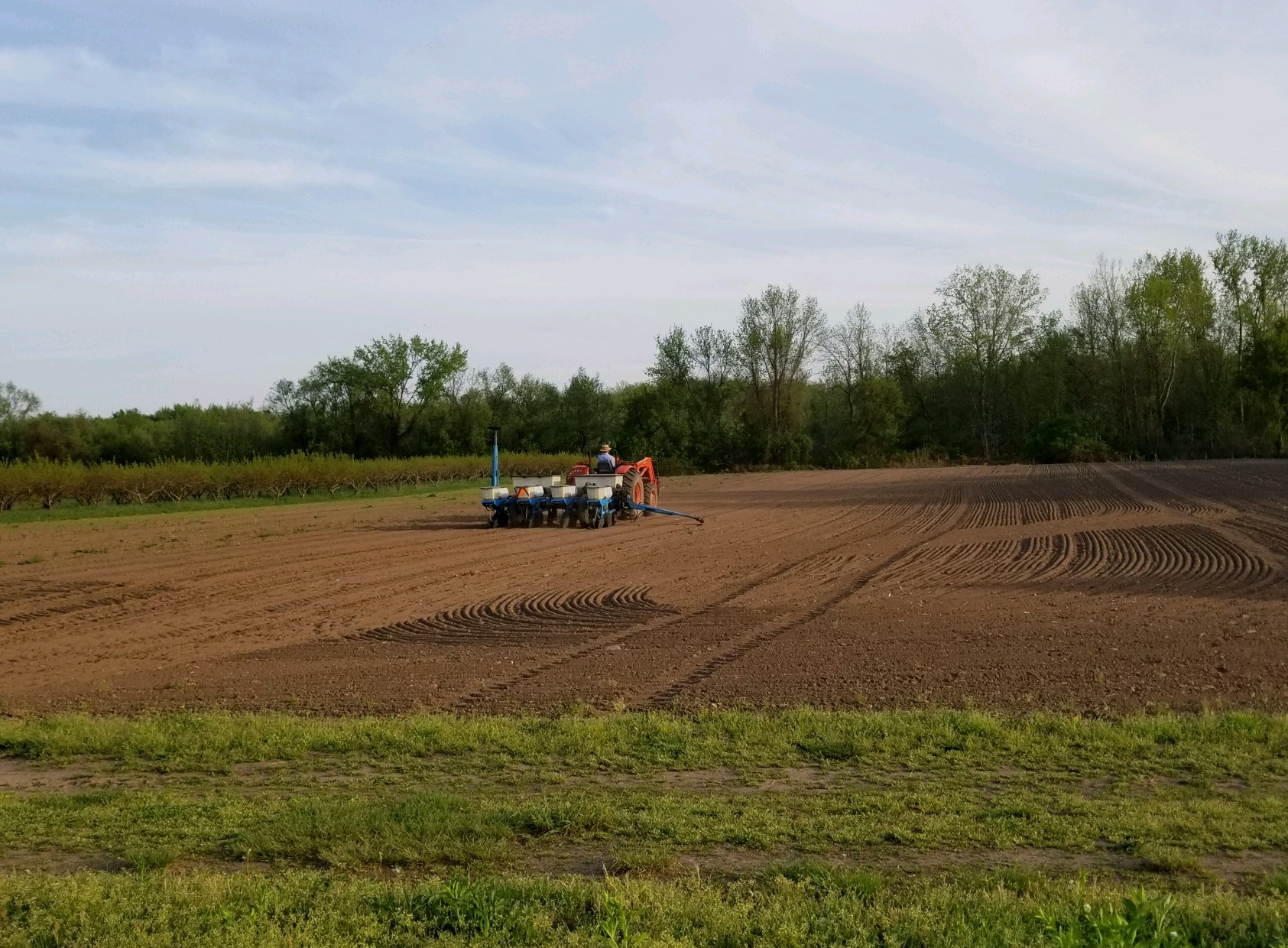I find myself talking about animals so frequently on here. I think it’s because I see so many different critters everyday. Farming truly is sharing with nature if you think about it. This beautiful specimen is a painted turtle; one of the two I have seen emerge from our swamp to lay eggs. I’m not sure exactly why or how the soil got se wet around her. My best guess would be she made it like that so she could more easily dig a hole for her eggs. Only about 15 feet away from where I found this turtle, I found a different type of ground nest hidden in the strawberries! I haven’t figure out what bird species yet, but it looks similar to a sandpiper or plover (which look like mini killdeer).
Ok, on to some actual farming. While we are still deep into planting season, I’d like to talk about the two ways we plant our crops in the field: transplanting and direct seeding. Transplanting is a great way to get plants earlier, because you can start them inside in the warmth while it is still too cold for them outside. Then, when it finally is warm enough for them to grow, you can plant them outside and have a huge head start. However, transplanting costs a lot more money than simply putting seeds in the ground(which is not actually a simple thing). Tonight, I just finished planting our pumpkins and hard squash with our vacuum seeder (pictured above, which is direct seeding). Using a fan powered by the tractor, it creates suction against a rotating disc with holes. The seeds get sucked against these holes, and then dropped down a tube into the ground which has been opened by two discs, and is then closed and tamped down tight by two packing wheels. This last part is very important. You need to have a lot of “seed to soil” contact in order to help the seed germinate. The more soil is contacting the seed the more water can get to it. Seeds need water to let them know that it is time to open up and become a plant! There is obviously a lot more going on in the planter than I mentioned here, but this should give you a good understanding of how ours works. To the right is another type of direct seeder. We purchased this little gem (pictured below)over the winter, and I used it for the first time this spring to plant dill. It works extraordinarily well for being a seeder that you just push. We don’t always plant huge fields, so this comes in very handy for smaller plantings. I will talk about transplanting in a future post, after we plant our fall brassicas(cauliflower, broccoli, and cabbage).
Fresh pick of the week: strawberries!!
That’s it for this week! Keep your eye on our facebook and instagram (@Kirbysfm) tomorrow for the fruit update.
Thanks for reading everyone, and happy growing!
-Farmer Chad





